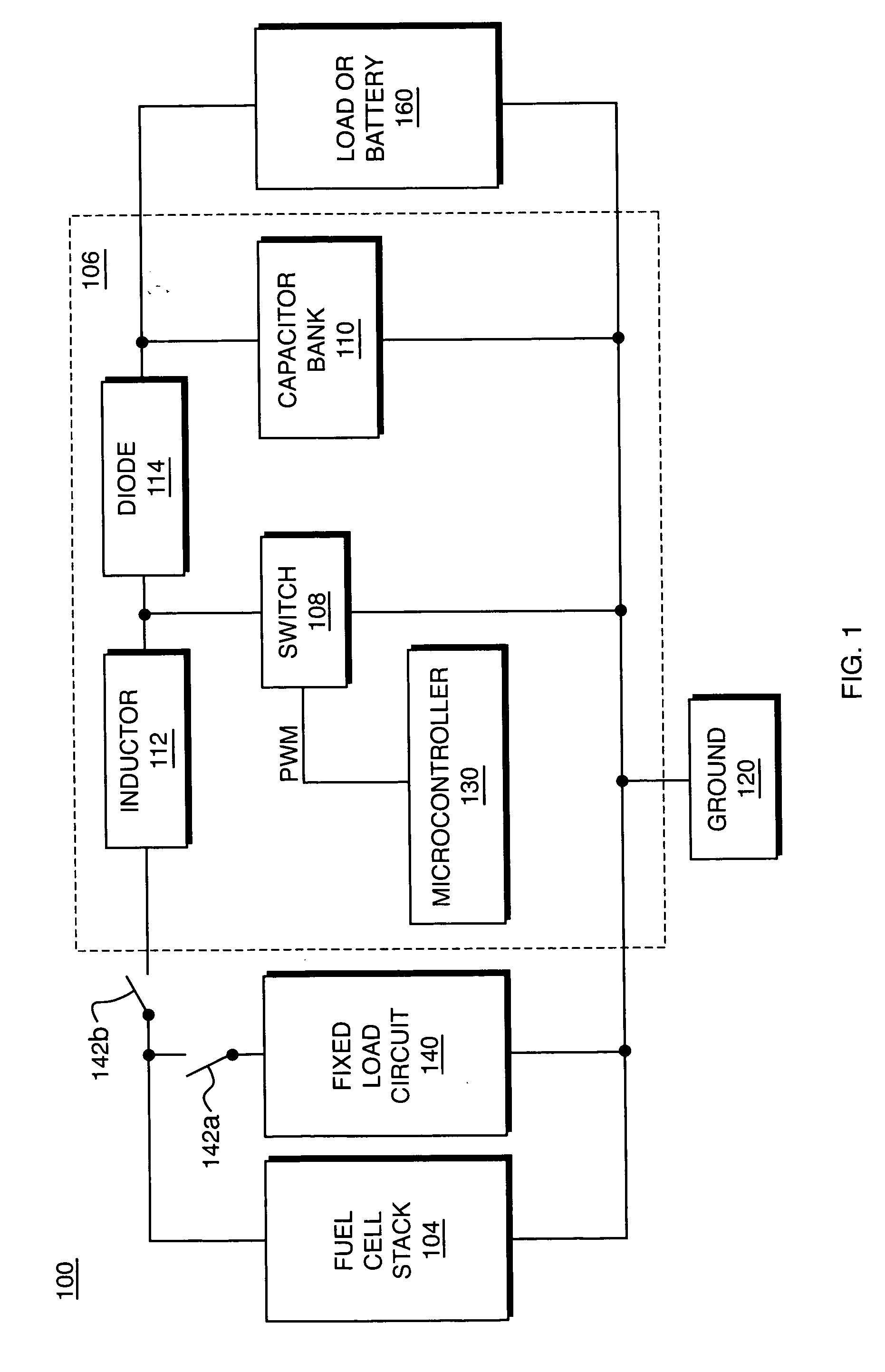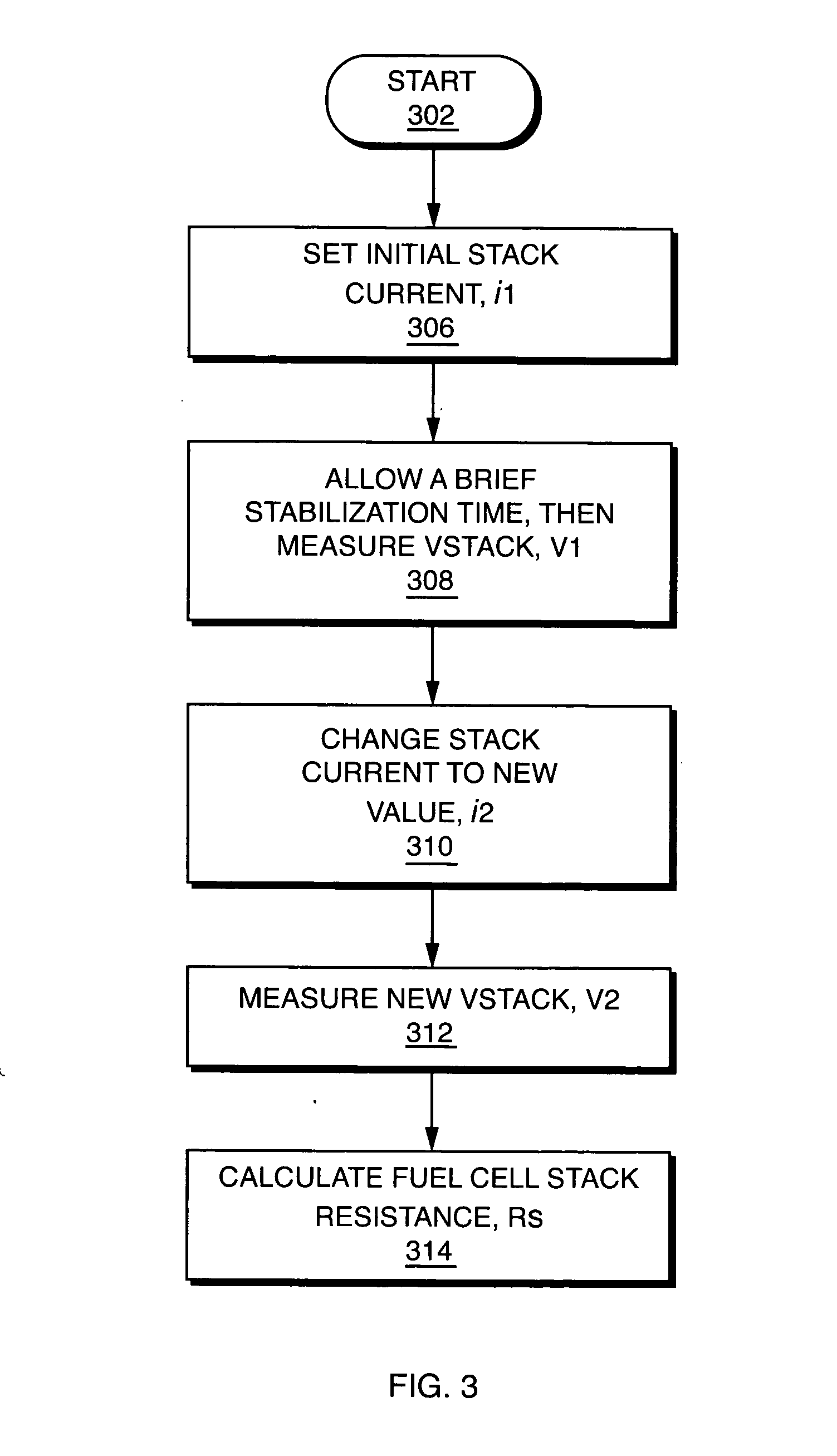Automatic measurement of fuel cell resistance
a technology of automatic measurement and fuel cell, applied in the field of fuel cells, can solve the problems of high cost of fuel processing, high power consumption, and tendency of the catalyzed membrane to dry out, and achieve the effect of increasing the resistan
- Summary
- Abstract
- Description
- Claims
- Application Information
AI Technical Summary
Benefits of technology
Problems solved by technology
Method used
Image
Examples
Embodiment Construction
[0032]FIG. 1 schematically illustrates a system 100 for controlling a fuel cell system, which in the illustrative embodiment is a fuel cell stack 104. A switching DC-DC converter circuit illustrated within dashed box 106 is employed to control certain aspects of the operation of the fuel cell stack 104.
[0033] By way of background, the DC-DC converter circuit 106 operates in a boost configuration in the following manner. In a basic boost configuration, if the switch 108 (typically comprised of a set of switches) has been open for a long time, the voltage across the capacitor bank 110 is equal to the input voltage from the fuel cell stack 104. During a charge phase, when the switch 108 closes, the input voltage is impressed across the inductor 112. The diode 114 prevents the capacitor bank 110 from discharging to ground 120, because the input voltage is DC, current through the inductor 112 rises linearly with time at a rate that is proportional to the input voltage divided by the ind...
PUM
| Property | Measurement | Unit |
|---|---|---|
| Electrical resistance | aaaaa | aaaaa |
| Electric potential / voltage | aaaaa | aaaaa |
Abstract
Description
Claims
Application Information
 Login to View More
Login to View More - R&D
- Intellectual Property
- Life Sciences
- Materials
- Tech Scout
- Unparalleled Data Quality
- Higher Quality Content
- 60% Fewer Hallucinations
Browse by: Latest US Patents, China's latest patents, Technical Efficacy Thesaurus, Application Domain, Technology Topic, Popular Technical Reports.
© 2025 PatSnap. All rights reserved.Legal|Privacy policy|Modern Slavery Act Transparency Statement|Sitemap|About US| Contact US: help@patsnap.com



